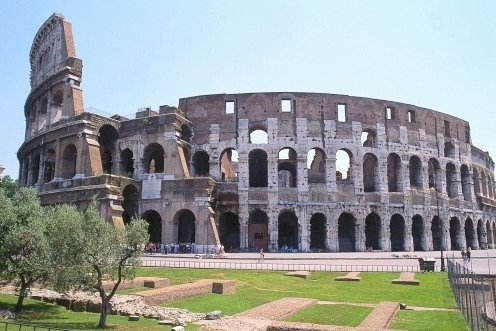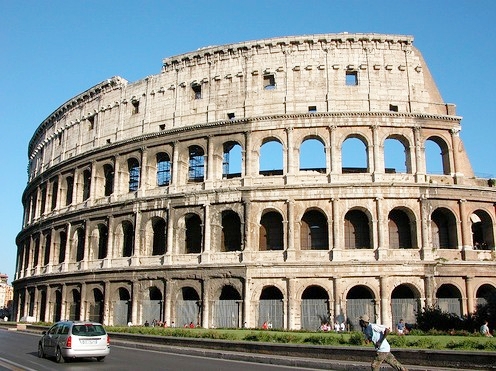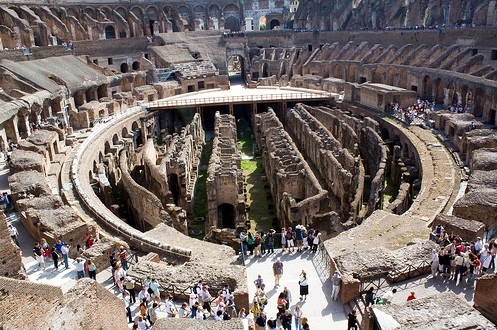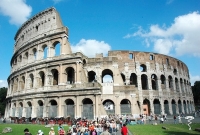Colosseum, RomeColosseum, RomeVespasian (he reigned from 69 to 79 a.d.) built a huge arena on the site of Nero's Lake, which associate the holidays could be celebrated. He began with the construction around the year 72 a.d. and it was inaugurated again later. This was done because the then in use was taken by Titus (he used it for big feasts which lasted sometimes days). This was later called the Colosseum amphitheatre. The building was so named because there is a huge gilded statue stood directly next to the building of Nero (he was here depicted as Sun God). This was such a picture on Rhodes, commemorating one of the wonders of the world, that was called the 'colossus'.  The Roman year presumably counted about 130 holidays; for the commemoration of old religious days, Imperial triumphs and other highlights from the glorious history of Rome. About half of all celebrations went along with all kinds of games and spectacles such as chariot races, gladiatorial and animal fights. When they left together los gladiatorial criminals. That were always fighting on life and death. These feasts were especially good to just not to the poverty and hunger to think. The emperors encouraged these celebrations. They had then contact their nationals (the feasts were then also by the emperors offered) and so the distance between ruler and the people was smaller. If the people at the end of a contest to decide what happens to the surviving fighters had to happen. The emperor was so popular among his people. The Colosseum has a circumference of 527 metres. The height of the Colosseum is 57 metres and it has 80 inputs and place for approximately 50,000 spectators. The form of the Colosseum is oval and it has steep bleachers. This is done to all spectators to give a good picture of what's happening in the Colosseum. The outer wall consists of four different parts. The bottom three layers are decorated with columns. The bottom layer contains Doric columns and is 10.50 meters high. The arches are 7.10 metres high and 4.30 metres wide.  The second layer has ionic columns and is 11.85 metres high. The arches are high at 4.30 6.40 meters meters wide. The third layer has Corinthian columns and is as high as the second layer. The arches have the same dimensions as the second layer. The upper section is in contrast with the other three building layers because these rectangular openings instead of arches. Under the arena is a complicated cages-and corridors system for the animals and Gladiators. The cages were hoisting underground after which the animals and Gladiators in the arena could. From the basement of the Colosseum there ran a tunnel to the Ludus Magnus, the place where gladiators were trained. The Gladiators, who were selected under convicted criminals, slaves and prisoners of war, were classified in different categories. Some of them fought in a heavy armour with sword and shield. Others were lightly armed and only had a dagger and a armbeschermer to defend themselves. There were also gladiators who appeared in the Coliseum with only a net and a Trident.  The Colosseum is a construction work that, when it would have had to make only with time and the elements, probably would have had an eternal life. Antiquarians who have examined the Colosseum and the number of seats have estimated, suspect that the topmost stone rows were probably still surrounded with wooden galleries which probably after a series of games were taken away and then again were built. In all parts of the building are now countless holes to find. Here are three different thoughts about regarding the cause: 1. The stone blocks were connected by heavy bronze or iron anchors and anchors are damaged or destroyed by the rapacity. 2. The empty spaces were used as market area. The holes were then drilled by artisans or enlarged to let the stalls and tents on support. 3. It is because in the 14th and 15th century stone from the walls of the Colosseum for construction works were met blocks. Nowadays there are no spectacles and other pursuits in the Coliseum but can you visit the Coliseum. The bottom is open and you can see the cages of animals and the underground passages system. 
|